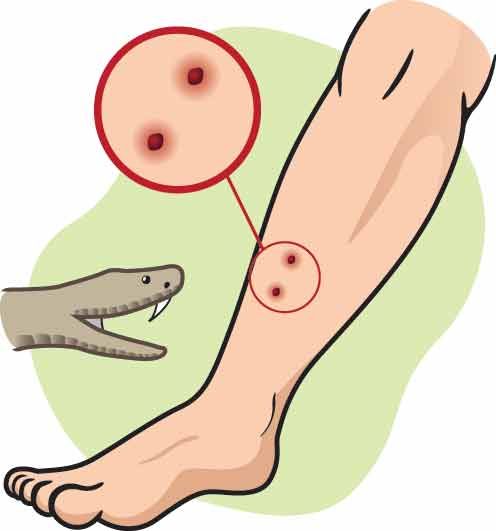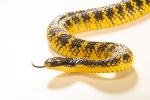We've come a long way...

The Australian wilderness is synonymous with dangerous and deadly animals, none more widely recognised and feared than our vast array of venomous snakes. The risk imposed upon humans by snakes was never greater than when our earliest of settlers arrived on our shores. Our indiginous population were well versed in avoiding snakebite, but new Australians had much to learn. Snakebites were common, and the chance of survival was slim and more reliant on good luck than good medical practices.
Today, despite our ever-growing population and more and more residential developments encroaching upon snakes natural habitats, snakebite is less frequent and fatalities are rare thanks to increased education, professional snake relocators, advanced medical practice and the relatively easy access to antivenins.
Through my research into snakebite treatment and snakebite fatalities, I have come across numerous interesting scenarios where a snakebite victim has died due to poor treatment techniques and useless medicines. In the early years, travelling Salesmen posing as medicinal experts would prey upon people's fears, canvassing an array of supposed snakebite treatments and medicines. In most cases, these medicines and ointments were nothing more than herbal concoctions suspended in alcohol. Treatment techniques at the time were equally useless.
Travelling 'Snake Shows' became popular in later years, with many of these 'Snake Wranglers' succumbing to bites from their own snakes despite many of them claiming to be immune to snake venom or having their own special remedy on-hand.
Below is a small selection of incidents where such archaic remedies ultimately lead to the victims' demise. We've sure come a long way...
Deliberate Envenomation!
In 1867 in Rutherglen, Victoria, a travelling Snakeman named Shires, claimed to have developed an antidote for snakebite.
Local Policeman William Drummond allowed himself to be bitten on the arm by one of Shires' Tiger Snakes to demonstrate the effectiveness of the remedy. Drummond was bitten, the antidote administered, but he died in his home soon after.
Shires was tried for manslaughter but was acquitted with the defense that had he been given access to Drummond at his home, he could have saved his life.
Tried & Tested Failure.
There were many techniques that despite a complete lack of evidence for their effectiveness, continued to be administered, such as the use of ligatures, scarification and the injecting of ammonia. Sometimes, treatment consisted of multiple techniques, all to no avail.
In December 1878 a young boy was bitten in Alexandra, Victoria, by a Tiger Snake. A ligature was applied and the wound promptly scarified with a knife. Later, a Doctor injected the boy with ammonia and sent him home, where he died that same day.
Just Give It A Rub!
1887, Wangaratta, Victoria. A Chinese Market Gardener was bitten on the foot by a Black Snake. In line with Chinese medicine at the time, the snake was killed and its head was rubbed on the affected area. The Man succombed to the bite later that day.
Have A Drink... And Some Poison.
In May 1893, Victor Hullar was bitten by a Tiger Snake during a snake demonstration. He was given a drink of Brandy (which may or may not have included some form of 'antidote'), had the wound washed and a ligature applied. Later, Hullar was seen by a Doctor who injected him with strychnine and sent him to hospital where he promptly died.
A Day At The Zoo.
During May of 1928, a Zoo Keeper by the name of French was presenting a snake demonstration to a group of children at the Adelaide Zoo, South Australia. During the show, he was bitten by a Tiger Snake and first aid was immediately administered... ligature, scarification and the application of permanganate crystals to the wound. French died shortly after arriving at hospital.
Don't Worry About It!
In March 1932, thirteen year old Raymond George was bitten by what is thought to have been a Black Snake in Gosford, NSW. A ligature was immediately applied and the young boy was rushed to hospital. The on-duty Doctor stated that Black Snakes were not venomous, ordered the removal of the ligature and offered no further treatment. Raymond died soon after.
I'll Be Alright, I've Got My... Liquid!
In december 1934 in NSW, Kurri Kurri's Julius Mitchell, better known as 'Milo The Snake Man', was conducting a snake show when he was bitten on the hand. Milo fitted a loose ligature and applied his own special liquid concoction to the wound, refusing any further treatment, confident that this liquid would save his life. He was dead by sundown.
Today, with the immediate and correct application of a pressure bandage and the administering of advanced antivenins, the likelihood of succumbing to snakebite is greatly reduced. Having an appropriate bandage on hand along with knowledge of how to use it, will in most cases allow hours extra time to get the victim of snakebite to a hospital for further treatment. We need not fear snakes, but we do need to be prepared for the worst possible scenario, however unlikely that may be.
Buy Survival complete Snakebite Kits here:
Click: https://www.perthsnakecatcher.com/snakebite-kits--snakebite-bandages.asp?preview
...it may just save your life!
Contact Details
Perth Reptile Relocations 24/7 & 24/7 Snake Catcher Perth
in collaboration with Jamie Dennis - Frontline Snake Removals
Cockburn Central, Western Australia.
Mick - 0413788160
Email: [email protected]
